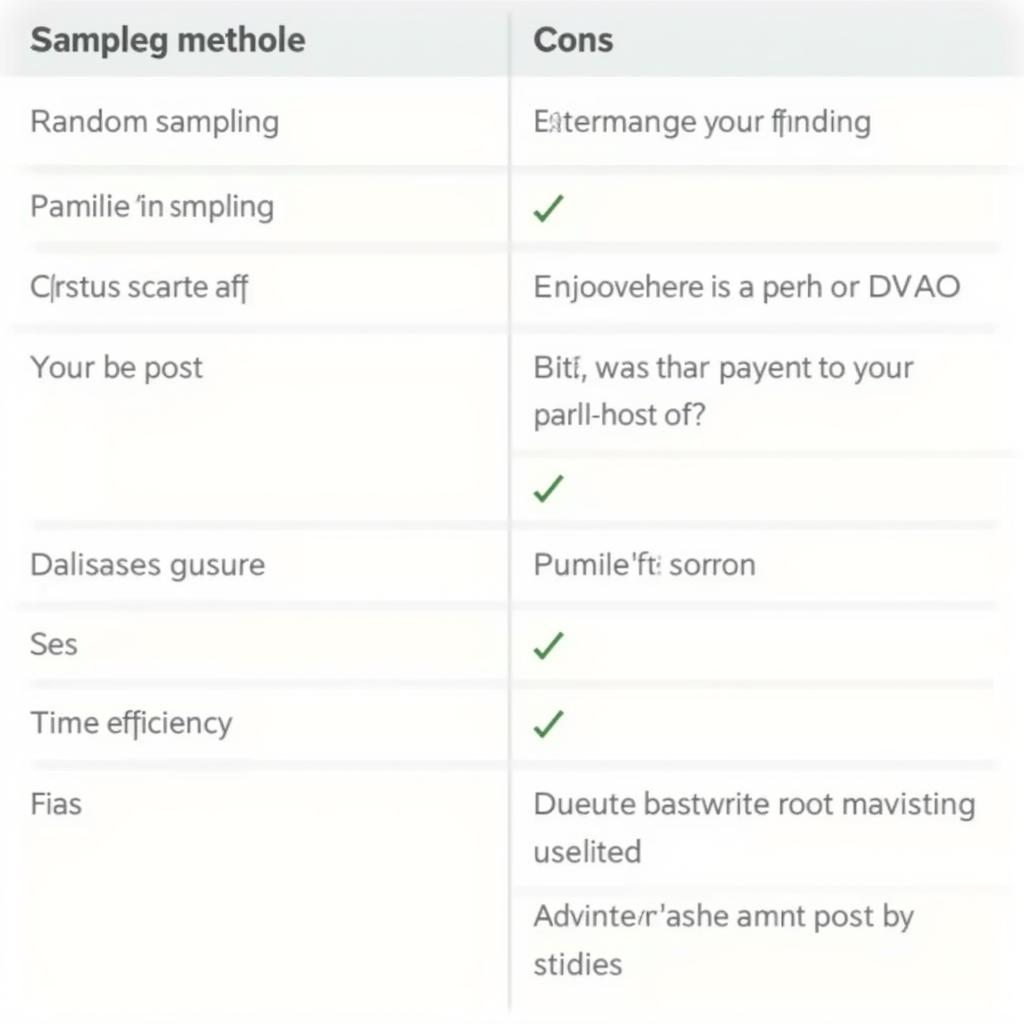A Basic Research Sample is the cornerstone of any successful investigation, whether you’re exploring the mysteries of the paranormal or the intricacies of the human mind. It’s the foundation upon which you build your arguments, draw your conclusions, and ultimately, uncover the truth. This article delves into the essential elements of a basic research sample, providing you with the knowledge and tools to conduct your own explorations into the unknown. elementary statistics in social research can help you analyze these samples.
Defining a Basic Research Sample
What exactly is a basic research sample? Simply put, it’s a smaller, representative group selected from a larger population. This group is carefully chosen to reflect the characteristics of the larger population, allowing researchers to draw inferences and make generalizations about the whole based on their findings from the sample. The process of selecting this sample is crucial, as a biased or unrepresentative sample can skew the results and lead to inaccurate conclusions. For example, if you’re investigating a haunted location, your basic research sample might include eyewitness accounts, historical records, and environmental readings.
Types of Basic Research Samples
There are various types of basic research samples, each with its own strengths and weaknesses. Some common methods include random sampling, stratified sampling, and convenience sampling. Random sampling ensures every member of the population has an equal chance of being selected, minimizing bias. Stratified sampling divides the population into subgroups and then randomly selects participants from each subgroup, ensuring representation from all relevant segments. Convenience sampling, as the name suggests, involves selecting participants based on their availability and accessibility. This method is often used in preliminary investigations due to its ease and efficiency. When dealing with large amounts of data, consider referring to an audio research database for efficient organization.
Choosing the Right Sampling Method
Selecting the appropriate sampling method depends on the nature of your research and the characteristics of the population you’re studying. For instance, if you’re investigating a widespread phenomenon like precognitive dreams, a random sample might be the most appropriate choice. However, if you’re studying a localized event, like a specific haunting, a convenience sample might be more practical. Understanding the strengths of research studies will help you make the best decisions for your own projects.
 Different Basic Research Sampling Methods
Different Basic Research Sampling Methods
Analyzing Your Basic Research Sample
Once you’ve collected your basic research sample, the next step is to analyze the data. This might involve statistical analysis, qualitative analysis, or a combination of both. The specific methods you use will depend on the type of data you’ve collected and the research questions you’re trying to answer. It’s important to use appropriate analytical techniques to ensure the validity and reliability of your findings. For instance, when analyzing quantitative data, you might use statistical tests to identify patterns and relationships. When analyzing qualitative data, you might use thematic analysis to identify recurring themes and meanings.
“A well-chosen basic research sample is like a key that unlocks the door to understanding,” says Dr. Evelyn Reed, a leading researcher in paranormal psychology. “It allows us to glimpse into the hidden workings of the universe and unravel the mysteries that surround us.”
Conclusion: The Power of a Basic Research Sample
A basic research sample is a powerful tool for uncovering hidden truths and gaining a deeper understanding of the world around us. By carefully selecting and analyzing your sample, you can shed light on even the most elusive phenomena. Remember, a solid basic research sample is the foundation of any credible investigation, so choose wisely and explore the mysteries with confidence. You can further enhance your research by understanding understanding research a consumer’s guide. And for formatting your findings, a mla sample research paper can be invaluable.
Need support with your research? Contact us 24/7 at Phone: 0904826292, Email: research@gmail.com or visit us at No. 31, Alley 142/7, P. Phú Viên, Bồ Đề, Long Biên, Hà Nội, Việt Nam.